How did they make it in those boats? An exclusive look at migrant vessels in the Keys
They are freedom boats for people desperate to leave their country and start new lives in the United States.
They are made of steel highway dividers. Tree branches. Fuel drums. Chicken wire and Styrofoam.
Others power through the currents with old Soviet-era diesel truck engines in the middle of the hull.
On these boats, people from Cuba and Haiti make a perilous journey across the water, under a merciless sun and through the dangers of the dark. With freedom in sight, some jump into the water, hoping to make it to shore. Others are rescued by Coast Guard crews. Many are sent back. Some get to stay. And others just disappear.
But their freedom boats stay behind, caught in mangroves, nudged onto sandbars, brought up to lawns or bobbing behind backyard docks.
Here is an exclusive look at what has happened to some of the vessels.
In a Florida Keys park
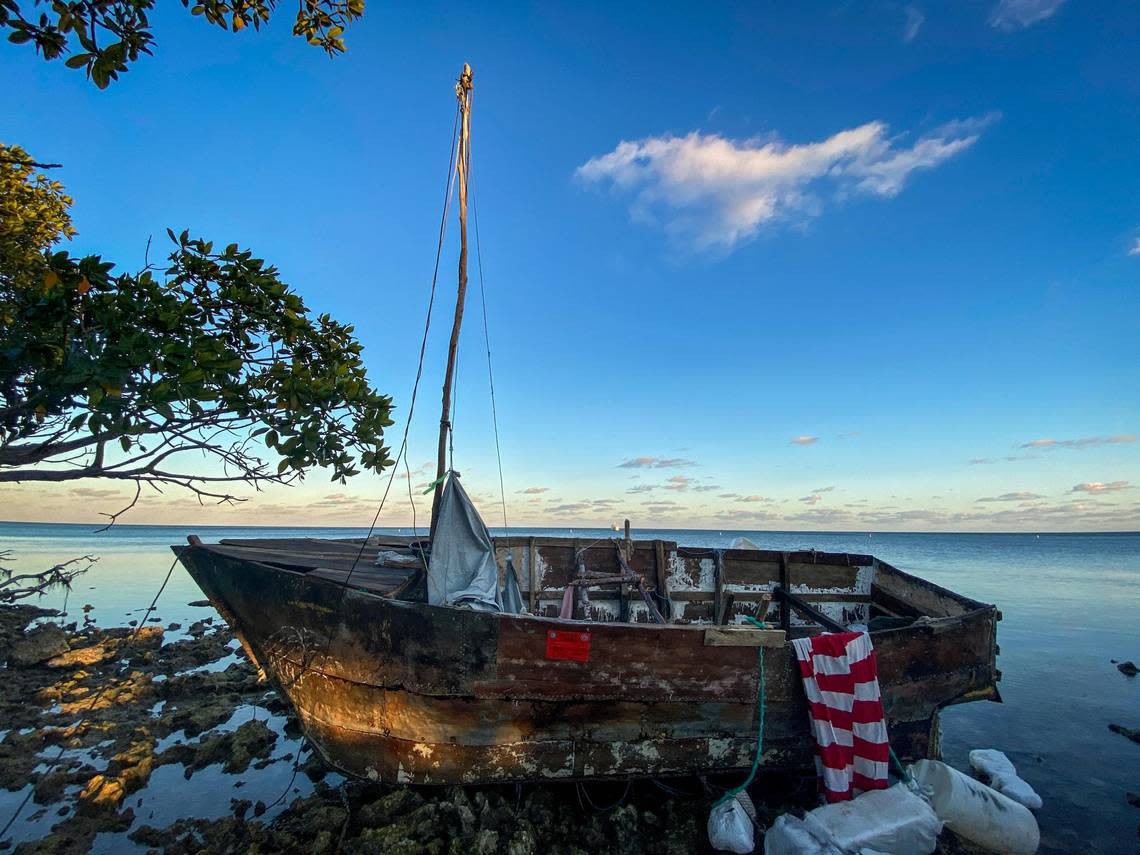
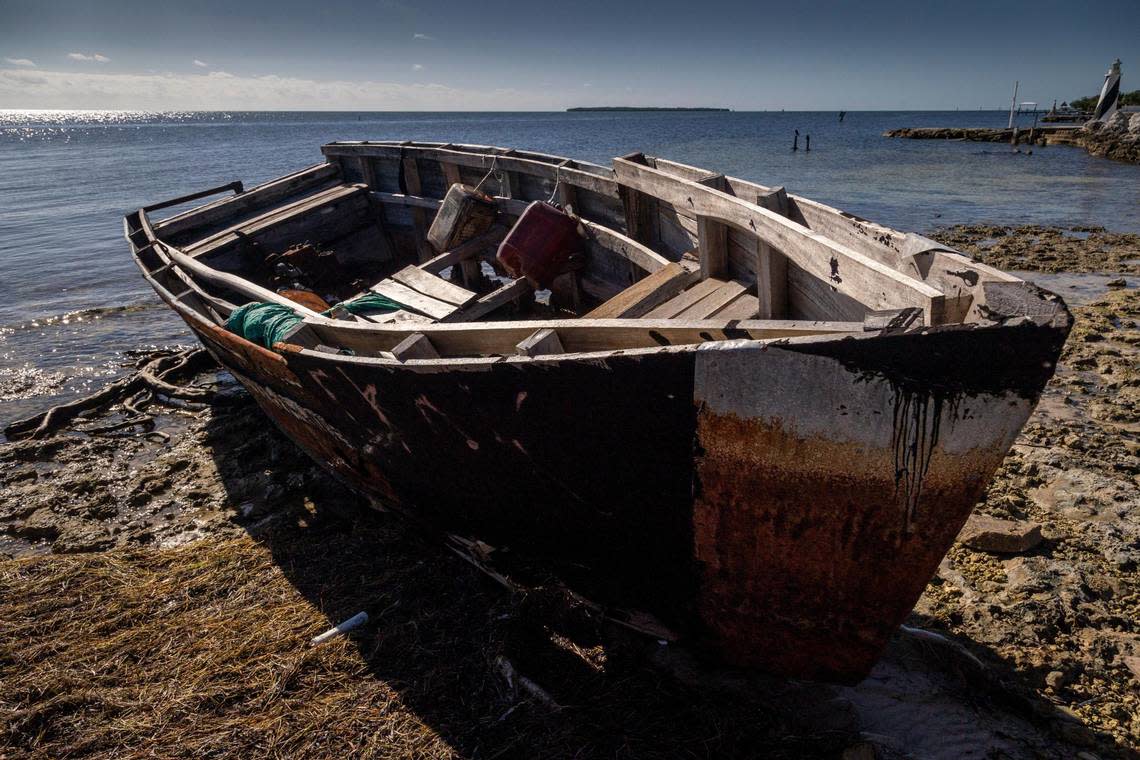
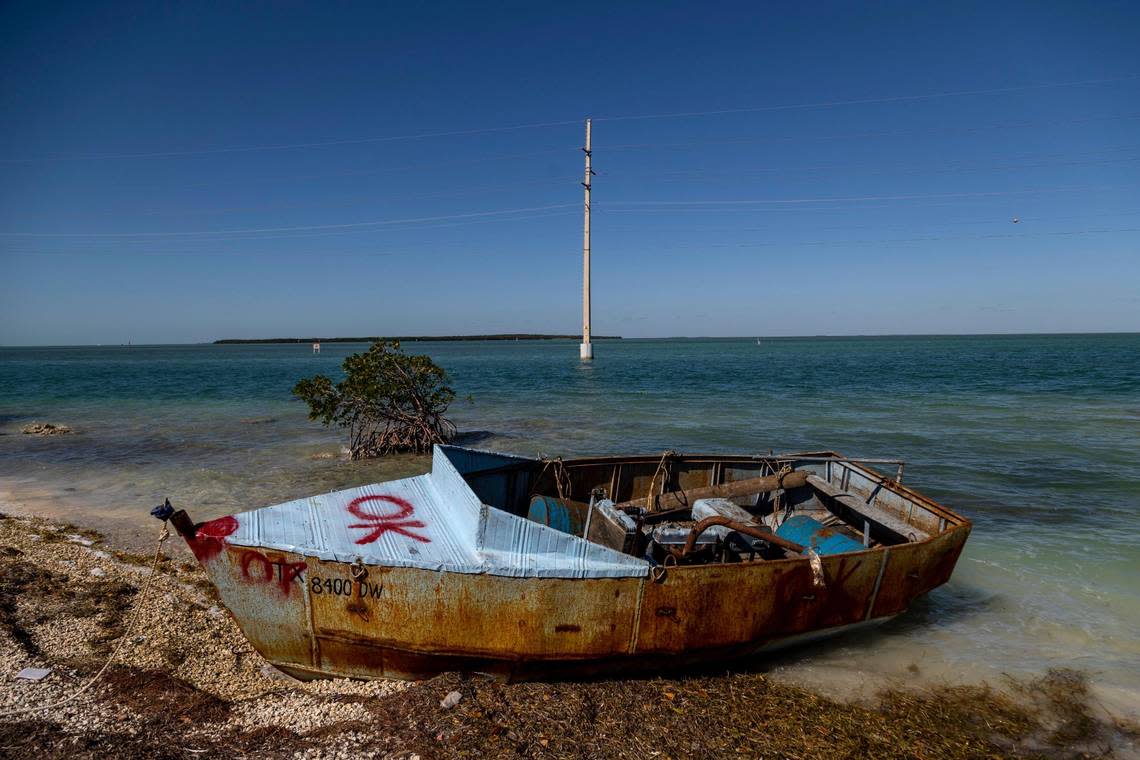
Along the Overseas Highway
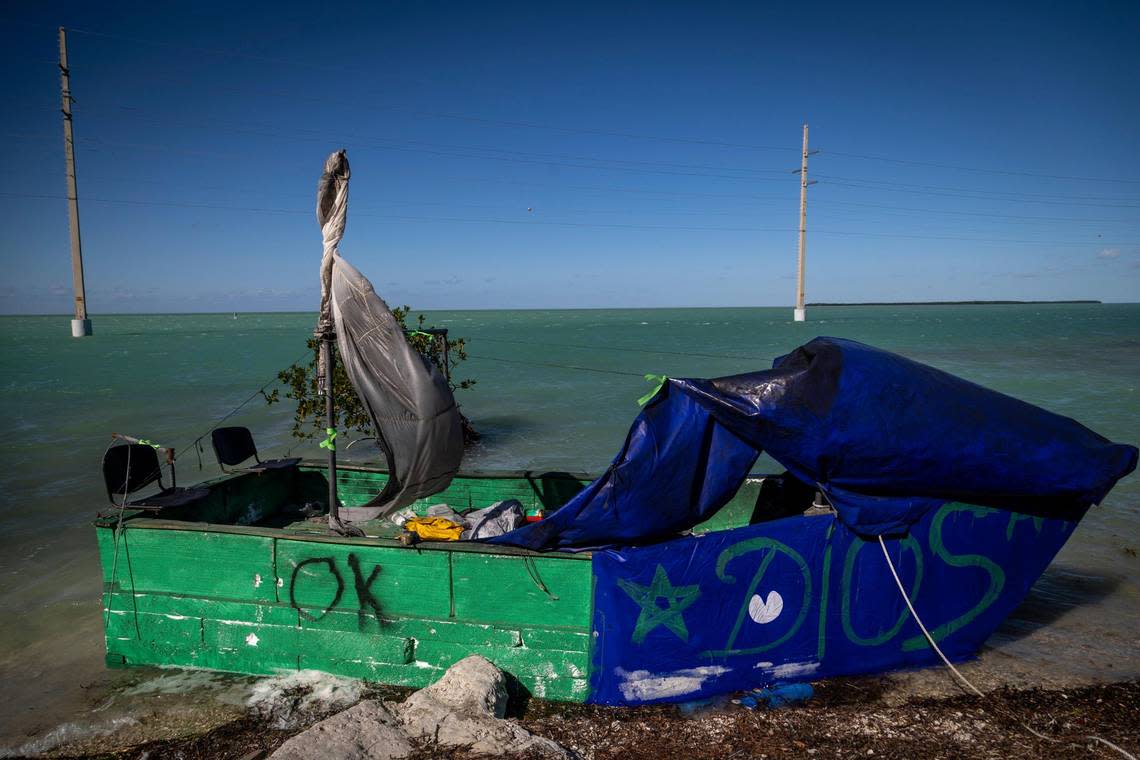

A tourist attraction in Marathon
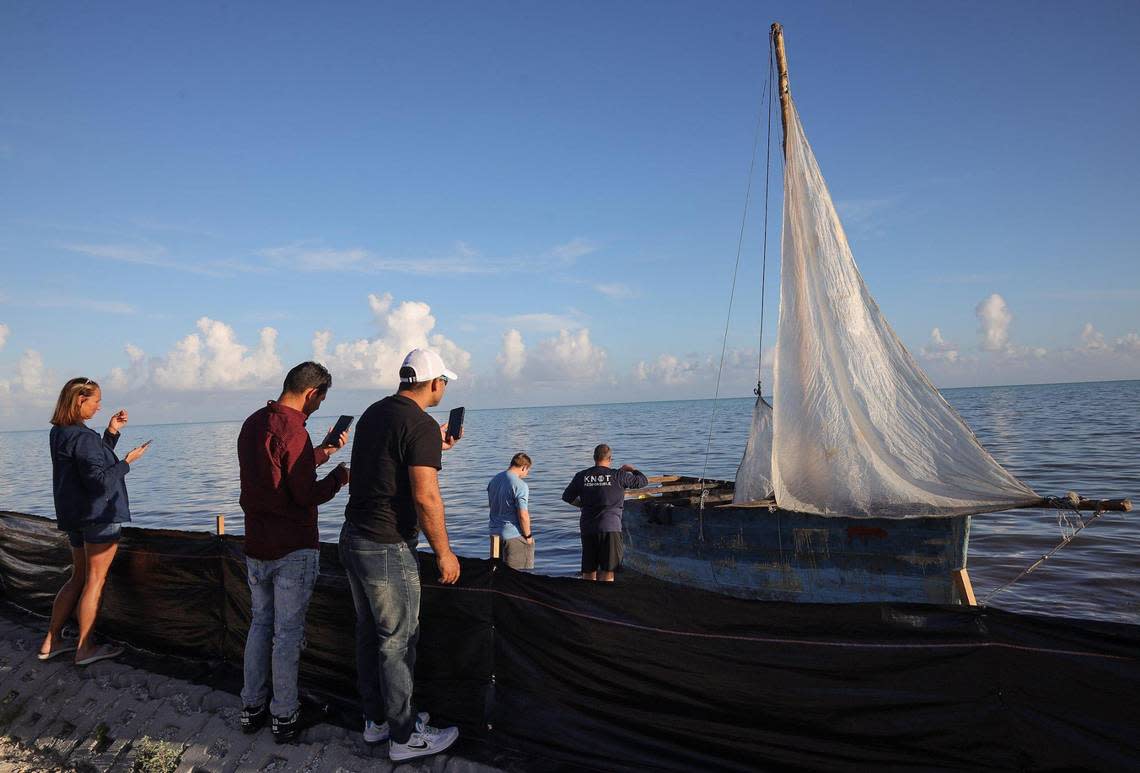
Just offshore
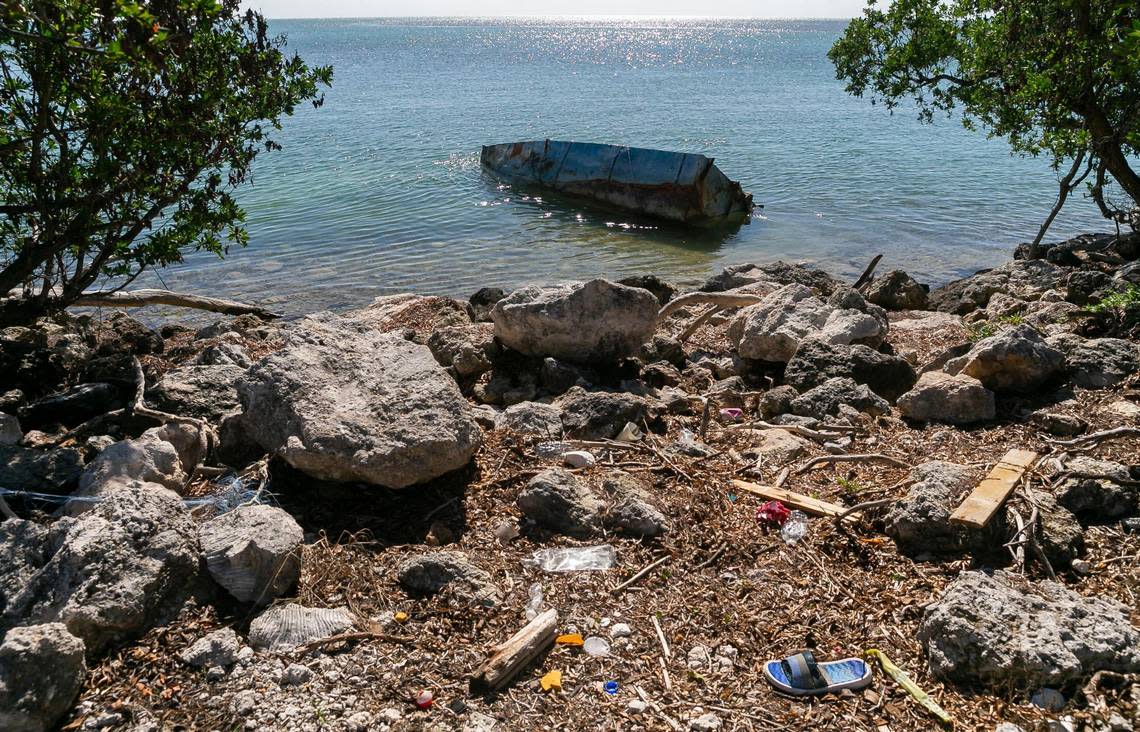
Keys lawn decorations
The story of a Haitian freighter
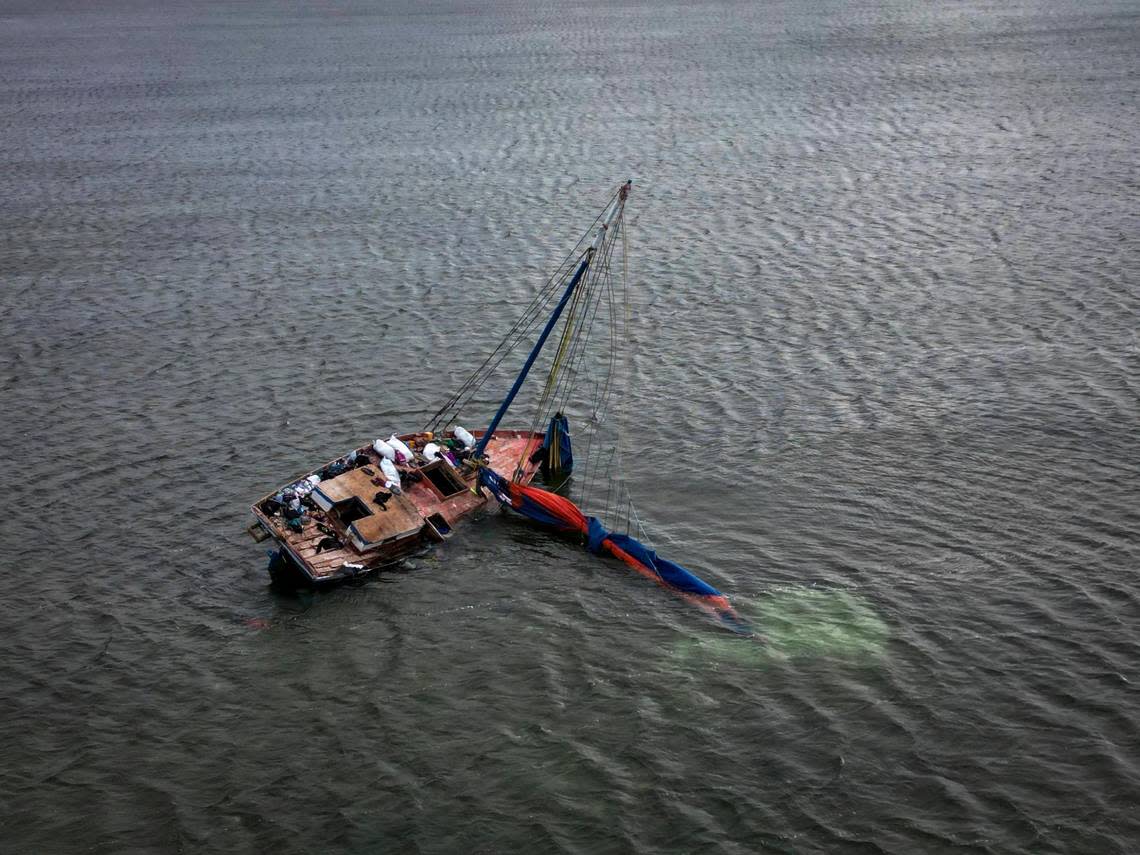
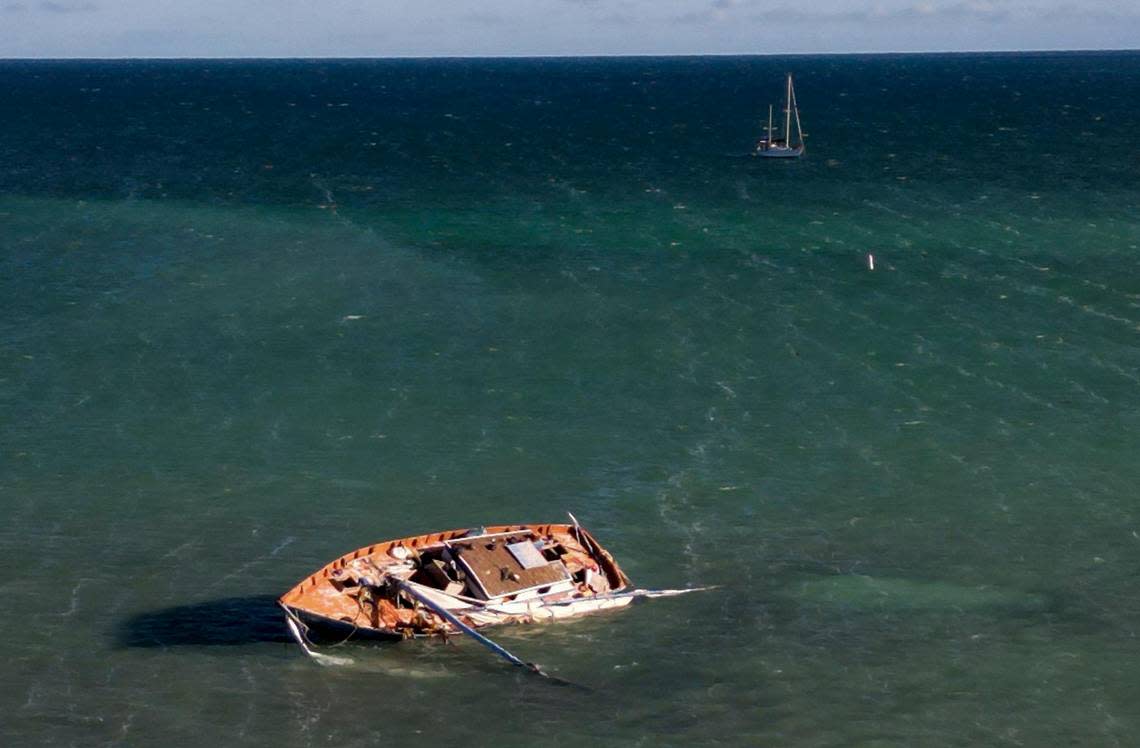
On the sandbar off Whale Harbor in Windley Key, a large and ghostly sailboat lists motionless in the shallows. One of its two masts dips in the water, the sail visible from the surface. The other points permanently like a watch’s hour hand to 1 o’clock.
The rickety Haitian freighter is a dour sight, out of character in a place — the Islamorada sandbar — that usually showcases hundreds of boats and thousands of revelers wading in clear blue water, drinking a weekend afternoon away.
Beckoning on shore a few hundred yards from the sandbar is the Postcard Inn Beach Resort and Marina. The luxury vacation spot used to be the Holiday Isle Resort Tiki Bar, synonymous with the Keys party scene and where the rumrunner cocktail was invented.
Partiers still flock to the sandbar. What they now see is a Haitian sailboat jutting out like a sculpture amid the pleasure craft. Nearly 200 people migrating from Haiti were on board the boat when it ran aground in late November.
The arrival was chaotic. Desperate to reach the shore, dozens of people jumped off the boat and swam for land in the dark of night, pushing federal agents and local law enforcement not only in a frantic race to capture them, but also to save them from the rushing tide sweeping them toward the columns of the Whale Harbor Channel Bridge.
Days later, the body of a man presumed to be among the migrant group was found floating in the area.
Now the sloop serves as a monument to the ongoing migrant crisis frustrating the U.S. Border Patrol and Coast Guard, and even more so, local authorities like the Monroe County Sheriff’s Office, whose deputies are often the first official contact.
Several other Haitian freighters grounded in shallow water off the Keys, mostly in Key Largo. Every few months, beginning in November 2021, overloaded boats, mostly under power of sail, have shown up off the coast of the archipelago, sometimes with hundreds of people on the decks and packed in the cabins.
The last arrival was Jan. 2, when a sailboat with 130 Haitians struck ground off an oceanfront gated community in Key Largo.
The story of Cuban migrant boats
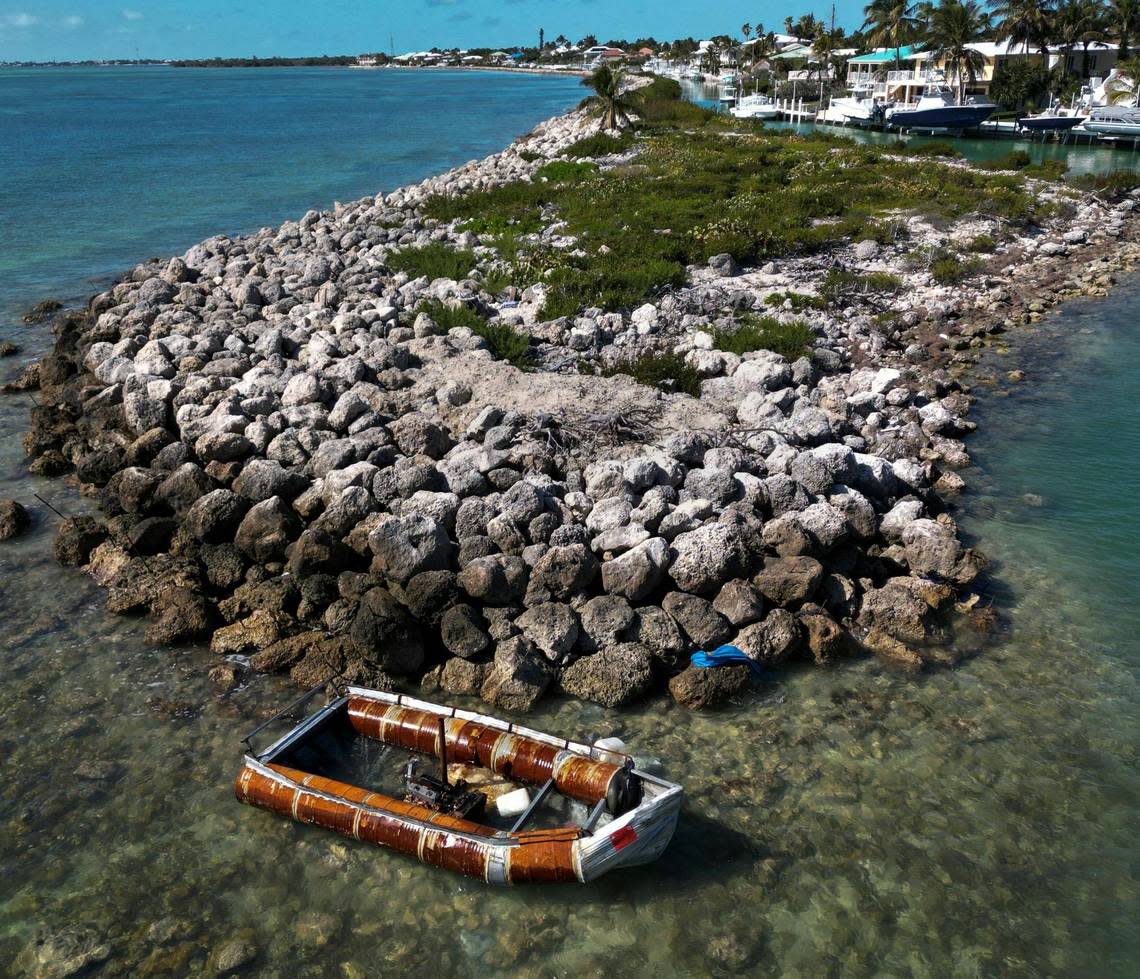
Dozens of smaller Cuban migrant boats also dot beaches in the Keys. Sometimes they get caught in mangroves and even wind up in people’s yards. These mostly homemade vessels have brought thousands of Cubans to South Florida since last year. In recent weeks, boats have been arriving up and down the island chain several times a day.
“All of the landings are costing taxpayers a lot of money, which is not reimbursed by the government. The landings bring a large number of boats which are abandoned and become navigation hazards or wind up on citizens’ properties and no one to remove them,” Sheriff Rick Ramsay said in December. “These boats remain for long periods of time, and at times citizens have to handle the burden and expense themselves.”
Florida Gov. Ron DeSantis activated the Florida National Guard and ordered state law enforcement agencies to help patrol the Keys for migrants days after nearly 500 Cubans arrived on the beach of Fort Jefferson in the remote Dry Tortugas National Park, about 70 miles west of Key West, over the New Year’s holiday weekend. The mass landing overwhelmed the skeleton crew of Fort Jefferson park rangers and prompted the federal government to shut down the national park.
Photos obtained by the Miami Herald show more than 20 migrant boats lined up on the beach of Garden Key, Fort Jefferson’s island.
The exodus from Haiti and Cuba

The migrant exodus is driven by political and economic upheaval in Cuba and Haiti. The Haitian crisis is compounded by escalating gang violence that’s not only sending people fleeing in hopes for a better future, but also so they can simply live out from under the shadow that they and their loved ones may be killed.
“The situation paralyzed an already crippled economy in the country, where the inflation rate reached a staggering 30%. This has all occurred amid a resurgence of cholera in the country, particularly in Haiti’s National Penitentiary in Port-au-Prince,” Democratic members of Congress said in a November letter to Department of Homeland Security Director Alejandro Mayorkas urging temporary protective status for Haitian migrants. “Since October, the disease has killed at least 100 people and sickened 8,000 more, though experts say the numbers are likely higher.”
Still floating
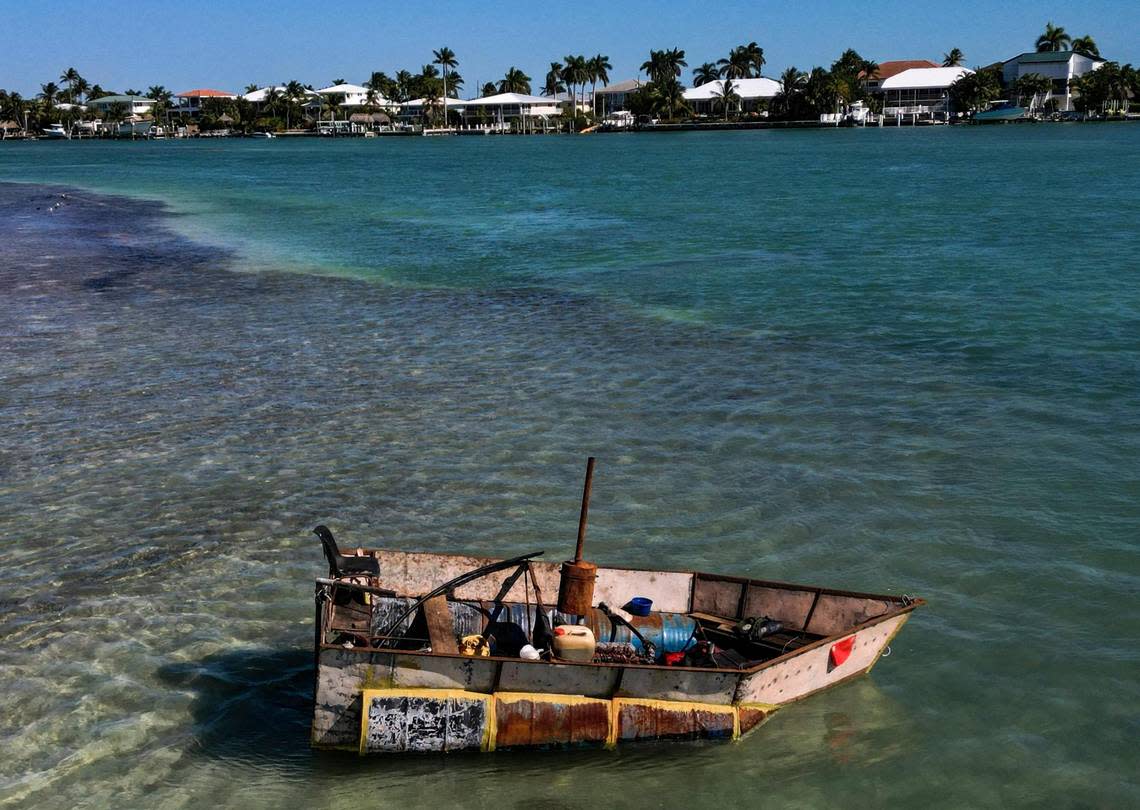
The arrivals
Boats from Cuba come almost every day, sometimes many in one day.
“It’s a fluid situation that ebbs and flows. One day you may have 10 arrivals. The next day, it may be three,” Ramsay, the Keys’ sheriff, said this month.
The vessels are a sight to see and sometimes struggle to fit the definition of a boat. While some are fishing vessels, complete with small pilot houses, most of the others are inventions. One veteran Florida Fish and Wildlife Conservation Commission officer said during an October landing that the boats speak to “the ingenuity and desperation” of their builders.
Lt. Spencer Zwenger, a U.S. Coast Guard C-144 Ocean Sentry pilot who regularly patrols the skies above the Florida Straits, said about the boat builders: “The limit is their imagination.”
Fallout from the boats
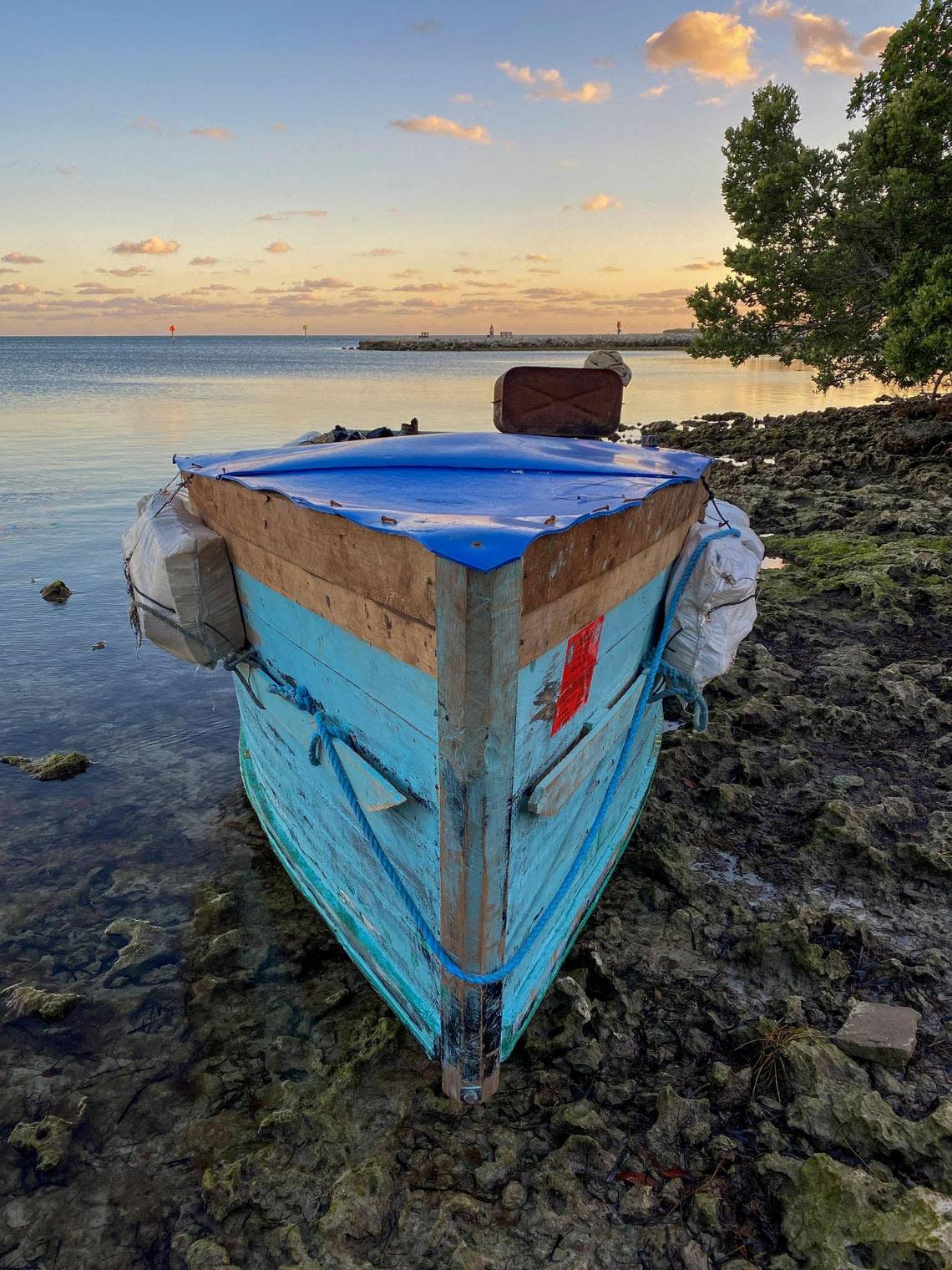
Fuel seeps from the boats into the water, along with the garbage in the form of soda cans and bottles and food containers, all making the vessels hazards to the fragile Florida Keys ecosystem. The FWC, along with Monroe County, is fighting an uphill battle to quickly document the growing number of migrant vessels so they can be removed.
“The migrant vessels have pollutants on board in the form of gasoline, diesel, and oil in unapproved containers,” Brittany Burtner, Monroe County’s senior administrator of Marine Resources, said in a statement. “Since there is a strain on resources, these pollutants can leak into our nearshore waters. I am concerned this can become an environmental emergency.”
The Florida Department of Environmental Protection issued a statement last week saying that under DeSantis’ emergency order that activated the National Guard, residents are not responsible for removing abandoned migrant vessels that land on their properties.
“The state will remove these vessels for you free of charge,” the statement reads, adding a phone number to call — 888-404-3922.
The next steps
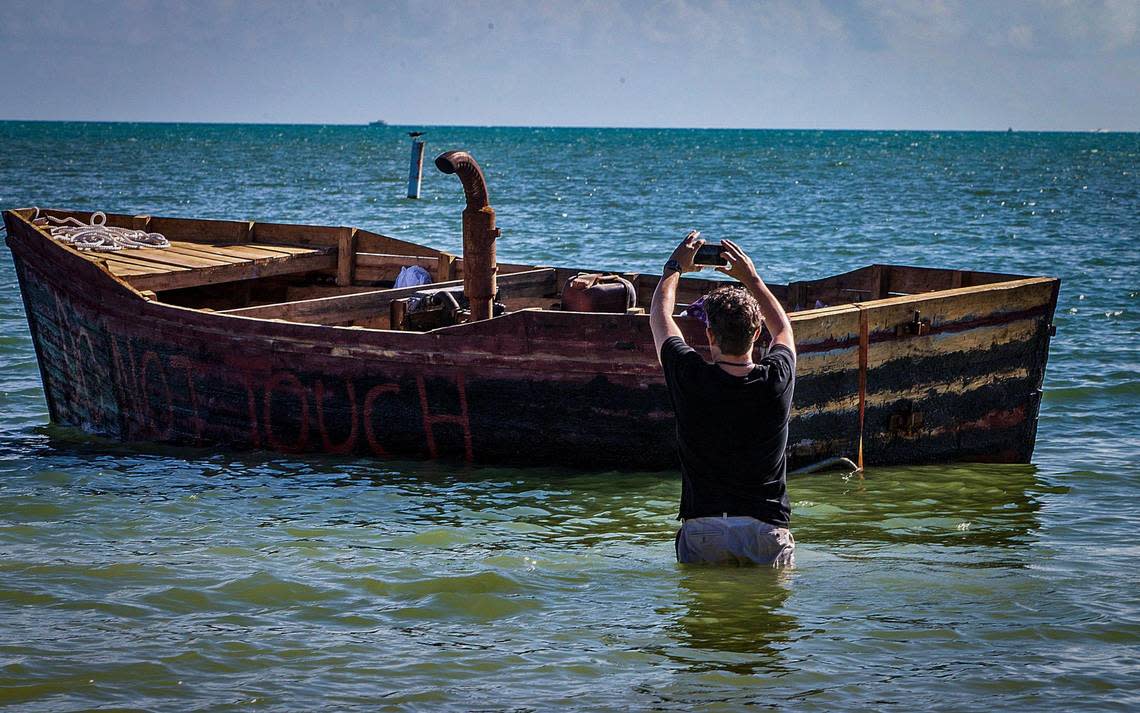
It’s too early to tell if the DeSantis administration’s executive order to enlist state agencies to help with migrant patrols has made a significant difference in slowing the flight to South Florida. It’s also premature to say if the Biden administration’s new parole program — aimed at stemming migrant crossings along the Florida Straits and the Southwest border by allowing people to apply for asylum before they set out on their journey — is working as planned since it went into effect earlier this month, experts say.
For the past two years, so many people from Cuba have come into the country, either by boat or at the border, that sources say there’s been an unofficial return to the “wet foot, dry foot” policy that allowed those who landed on U.S. soil to stay and that sent those caught at sea back to Cuba.
But between federal immigration authorities being overwhelmed by the number of arrivals and the Cuban government not accepting deportation flights since 2020, most of the people from Cuba reaching the U.S. recently have been allowed to stay after the Border Patrol processed them with a date to appear in court. Those stopped at sea are still being returned to Cuba on Coast Guard cutters.
That’s supposed to be over now with the Biden administration’s Jan. 5 announcement. All who enter the country without having gone through an immigration parole process that includes having a U.S.. sponsor are supposed to be sent back.
Sebastian Arcos, associate director of Florida International University’s Cuban Research Institute, said the administration’s focus on the border, where many more people are entering the country than by sea, could make matters worse in South Florida.
“Without an immediate clarification by Washington, I believe the closure of the Mexico border will send a spike of Cubans and Haitians attempting to reach South Florida by sea,” Arcos told the Herald.
And the communist Cuban government doesn’t have any desire to keep most of those wanting leave because they are often the ones causing problems within the country, Arcos said.
“The Cuban regime has a perennial need to export the discontented, what we call the ‘safety valve,” he said. “Internal security has always surpassed any other consideration for the Cuban elite.”
So, even if the current situation slows down, Arcos said it’s a matter of time before another influx visits South Florida’s shores.
“There is little the U.S. can do to put an end to these periodic inflows for good, other than manage each crisis,” he said. “The Cuban regime will find a way to pressure the U.S. into making important economic concessions.”
